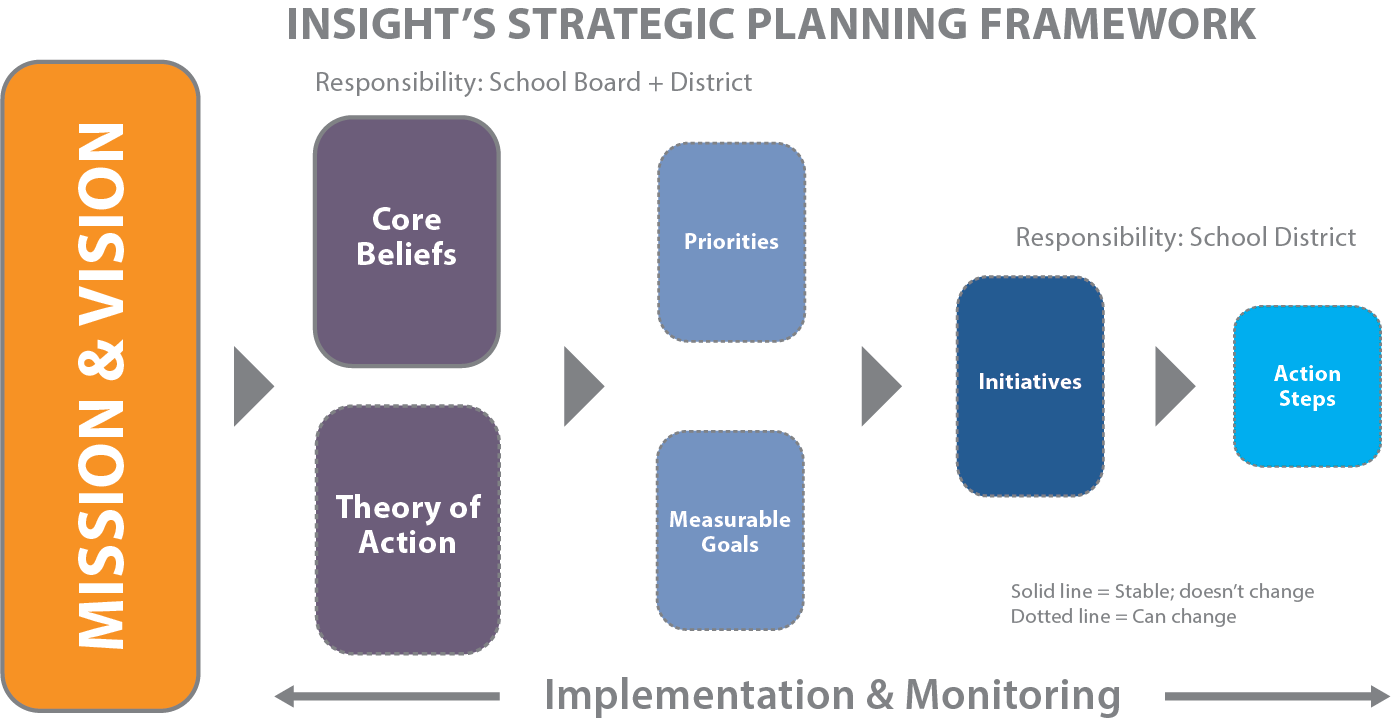
It’s easy to say that equity is a priority for a district or an organization; what’s more difficult is translating that priority into action. Over the last three years, I’ve seen the concept of equity situate itself in dozens of strategic planning processes that we’ve facilitated for districts across the country. With each new planning process, one thing has become increasingly clear to me: strategic plans themselves are critical for organizations, but at the end of the day, they are a technical fix. They are simply words on paper that are intended to provide guidance to an organization. What makes those words powerful, however, is the extent to which everyone believes them, understands them, and can clearly see their role in implementing what the words say. These considerations have dramatically impacted the way we at Insight facilitate strategic planning processes.
Specifically, we construct the strategic planning process to serve as a mirror that the district holds up to first see the system, then shape core beliefs, and finally develop goals that require the disruption of racialized outcomes. Through this process, we guide stakeholders to examine their own history with race and bias, understand the history of race in this country and the local community, and provide opportunities for regular discussions about race and bias throughout the organization. Through the individual, organizational, and community reflection process, the strategic plan becomes more than words on paper and works to transform beliefs and actions in the district to change life outcomes for students. So how do we do this? The framework we use is fairly straightforward. Figure 1 below outlines the framework itself.
Figure 1.

The strategic plan should explicitly name race and equity as a through line in each aspect of the plan outlined in Figure 1. Even more specifically, strategic plan goals must not only provide opportunities for students of color to receive great instruction, but more importantly, the goals must also outline how students of color will have access to those opportunities. This cannot be overstated. Thinking about access will drive a very different set of initiatives and action steps within a district.
We typically see strategic plan goals name things like closing the achievement gap or ensuring all students have the opportunity to go to college after high school or find a career pathway of their choice. While these types of goals are important, they become buzz words that typically do not force the district to examine the real issue of access that students of color have to high expectations for achievement in every classroom, early interventions that provide necessary supports, and honors and advanced placement courses—just to name a few.
As you can imagine, the strategic planning process can necessarily get messy and perhaps take a bit longer than anticipated if the organization is adequately using the process to ask itself, “Are we ready to address the real issues of race and bias that are fundamental to an equity-focused strategic plan?” To navigate that complex and messy process, below are five key questions/considerations we have found helpful in our work.
- Do members of the board of education and senior leadership team endorse racial equity, examine their own racial competence, and proactively confront racial inequities?
- Is there a process for co-constructing the strategic plan with the community?
- Are racial inequities explicitly named in the strategic plan?
- Do strategic plan goals reflect opportunity and access for students of color?
- Are key performance indicators or metrics broken down by racial subgroups?
We have found that these five considerations necessarily change the way organizations develop their strategic plans and move through the planning process outlined in Figure 1 above. These considerations bring a different, and needed, tone to strategic planning that helps facilitate a common understanding of systemic barriers that must be addressed to transform life outcomes for all students.

Interested in more information about Insight’s approach to strategic planning with an equity focus or how we can support your district or school in this work? Learn more here.



Leave a Comment